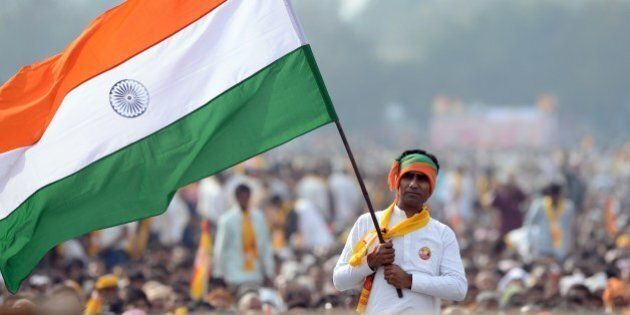
As Canadians grapple with alleged voter fraud, the ethics of election oversight and acceptable identification for our 24-million eligible voters, imagine the logistical nightmare that is the world's largest exercise in democracy.
In addition to being the biggest with 800-million potential voters, and most expensive at $35 billion, the Indian Parliamentary election also has the world's largest youth vote; political parties that reach all the way to our shores; reserved parliamentary seats for minorities; and electoral corruption on a mind-blowing scale.
Here are five things you didn't know about democracy in India:
Indian politics on our doorstep
There are an estimated 1.1-million Canadians of Indian descent. The Indo-Canadian population is so large and politically active that India's two biggest political parties -- the Bharatiya Janata Party, and the Indian National Congress -- maintain permanent "friendship" organizations here. One Canadian newspaper reported as many as 1,000 Indo-Canadians from Toronto are travelling to their homeland to volunteer for their chosen parties.
The Greatest (Election) Show on Earth
More than 800-million Indians are eligible to vote for the 543 individuals who will represent them in the Lok Sabha, India's lower house of parliament -- roughly akin to our House of Commons. That's almost four times more people than are eligible to vote for the President of the United States, and 33 times the voting population of Canada!
Reaching India's voters requires 935,000 polling stations. And while we still use a pencil to mark off a paper ballot in a school gym or church basement, India deploys mobile polling stations with sophisticated electronic voting machines. The infrastructure to support this massive logistical feat will cost the Indian government $35 billion -- 300 times Elections Canada's entire yearly budget (before the Fair Elections Act cuts it even further if it becomes law).
Ballots, booze, and bling
Here's another mind-blowing figure: $5 billion. That's how much Indian political parties are expected to spend on their campaigns. It's second only to the U.S., where parties spent $7 billion in the last presidential election. Unfortunately, Indian candidates aren't just spending their campaign money on posters and TV ads. In March, Indian police seized delivery vans and hearses packed with crates of money totalling $35 million, and 2.7-million litres of alcohol, intended as election bribes. Vote buying is an illegal but common practice in India, especially in impoverished rural areas. While we have our own election controversies, like the "robocall" scandal, in India political operatives hand out envelopes of cash, free booze, and even TV sets to win voter support.
And even though India has a law forbidding foreign donations, Indian officials believe some of the cash comes from Indian communities abroad -- like in Canada. However, Anupam Sharma, a member of the Indian Association of Manitoba, told us the Indo-Canadian community in general does not support fundraising for Indian politics.
Vote now -- all the cool kids are doing it
In Canada, youth are the least likely to vote of any age group. Less than 39 per cent of eligible young Canadians turned out to vote in the 2011 election. In that election LeadNow -- a Canadian youth advocacy organization -- chastised political parties for failing to address issues of concern to young people.
But in India, youth are a voting force. Half the Indian population is under 24 years old. One Indian political strategist estimated that as many as 40 per cent of voters are under 35 --150 million of whom will be voting for the very first time. As a result, Indian political parties address issues important to India's youth: jobs, and social problems of sexual violence and corruption.
Giving volume to the voiceless
India has grappled with discrimination arising from its historic caste system of social classes. In order to give a voice to those who were traditionally voiceless, the Indian constitution reserves 84 parliamentary seats for candidates from the lowest castes, and 47 seats for candidates from indigenous groups called the "scheduled tribes." In constituencies where these peoples make up the majority of the population, only candidates from these minority groups are allowed to run.
Pay attention, Canada!
There are two ideas Canada might consider from India's experience.
Like a number of countries, India marks the fingers of voters with a spot of indelible ink to help prevent election fraud. This year, an Indian youth organization has launched a new initiative to encourage voter turnout. Showing your ink-stained finger will get you discounts at some stores and gas stations. Offering consumer incentives for voting might help stem the ongoing decline in Canadian voter turnout.
And second, if Canada wants to give greater voice to its aboriginal population, India's system of reserving seats for its underrepresented peoples is one of many ideas worth throwing in the pot for consideration.
Craig and Marc Kielburger are co-founders of international charity and educational partner, Free The Children. Its youth empowerment event, We Day, is in 11 cities across North America this year, inspiring more than 160,000 attendees from over 4,000 schools. For more information, visit www.weday.com.